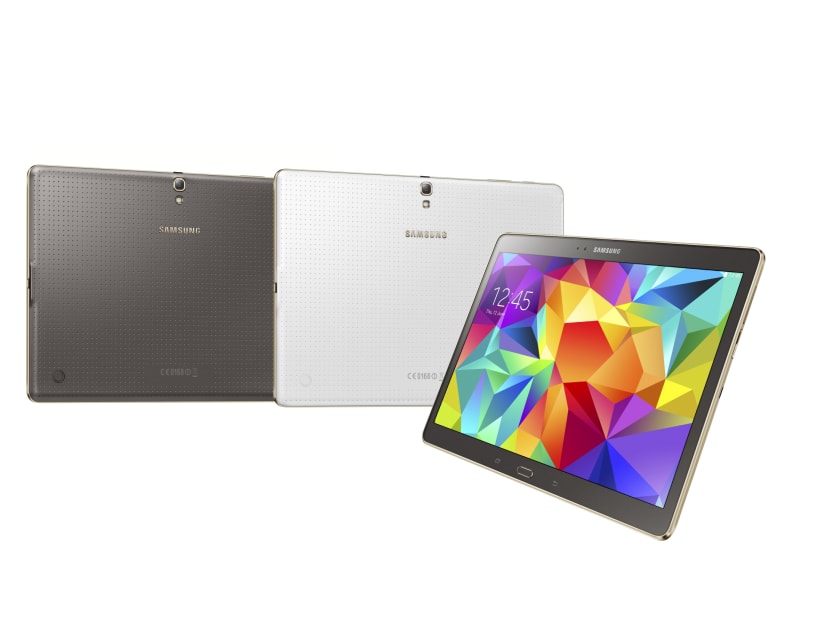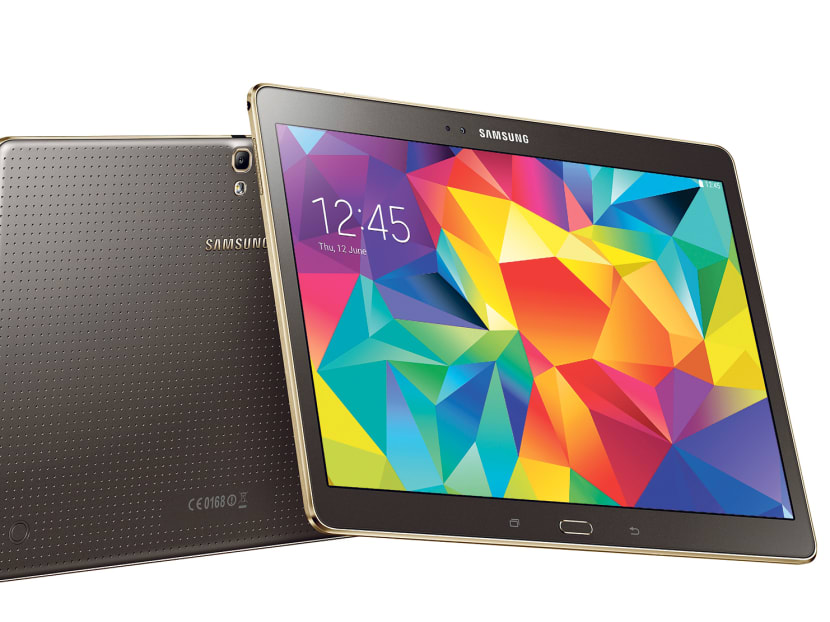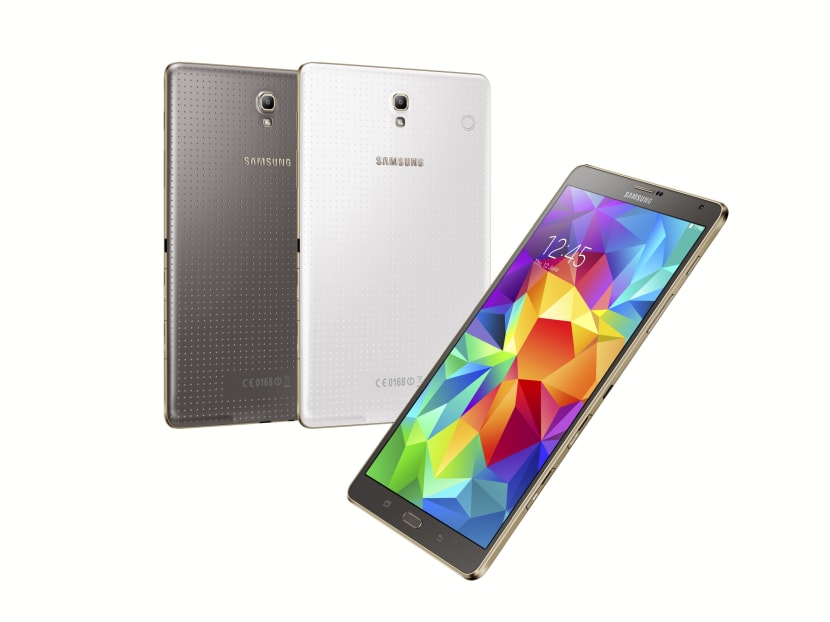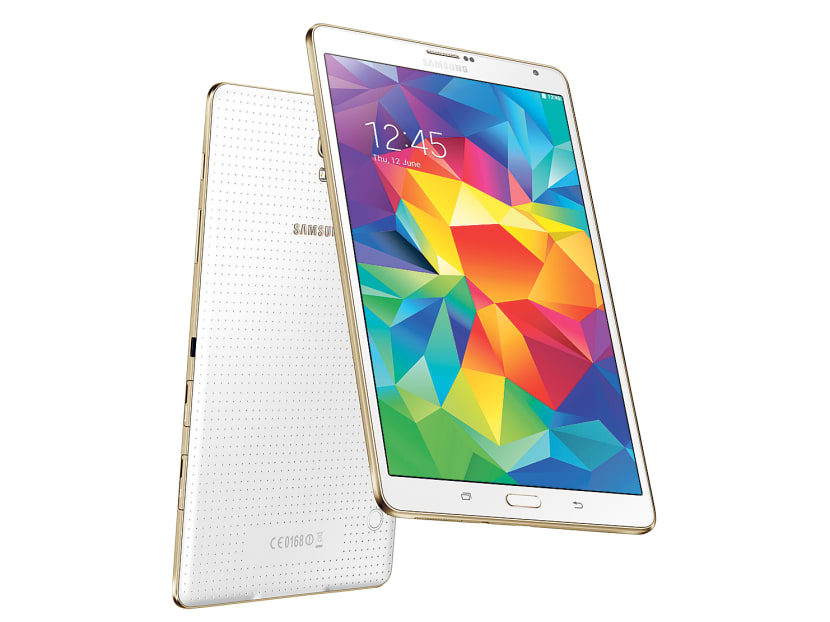Galaxy Tab S: Not an iPad killer




SINGAPORE — When Samsung announced its Galaxy Tab S in New York in June, it also declared its intention to be the No 1 tablet maker in the world.
At that point, the Korean mobile giant was already ranked No 2,making the message clear: Apple, Samsung is coming for you.
So, is the Galaxy Tab S an iPad killer? The tablet is available in two sizes — a full-size 10.5-inch version and a handier 8.4-inch one.
The devices run Android’s Kitkat 4.4 OS, are equipped with Exynos 5 Octa or Qualcomm Snapdragon 800 2.3GHz Quadcore processors and have 16GB or 32GB of internal memory, which is expandable by up to 128GB of microSD card memory.
They also feature an 8-megapixel rear camera and a 2.1-megapixel front-facing camera that takes full HD videos. All of these — a fast processor and decent cameras — are standard for a premium tablet, so no surprises here.
The tablet’s big draw is its Super AMOLED screen, first seen in the Galaxy S5 smartphone.
When TODAY reviewed the S5, we were blown away by how sharp and bold colours on the screen were.
This was no different when translated to the Tab S. Videos looked gorgeous, particularly on the larger 10.5-inch screen and everything, from surfing the Web to word processing, seemed brighter and more appealing.
Samsung has realised a great part of a device’s appeal is in the minute-to-minute user experience and the Tab S delivers on that visually.
In fact, the company has enhanced the tablet’s screen by making it colour adaptive, changing hues to match environmental lighting, as well as making the screen less reflective.
There were issues with reflections, particularly with the larger 10.5-inch model, but we suppose it is impossible to completely get rid of them.
Battery life for the Tab S is good — rated at 11 hours of video playback on a single charge — and the devices more or less lived up to that promise.
Ergonomically, both models were a breeze to use and carry around. At a mere thickness of 6.6mm, the 10.5-inch version weighs 467g, while the 8.4-inch one weighs only 298g. Yet, the tablets never felt frail, with their brushed metallic frames and textured back giving them a sense of solidity.
As expected from Samsung, the Tab S has been stuffed with a lot of little extras. Both the 10.5- and 8.4-inch versions feature the fingerprint scanner which was introduced in the S5, which means they have the ability to authenticate electronic payments on PayPal with only your thumbprint.
Unfortunately, as with the S5, the scanner did not work very well.
There is also SideSync, which lets you control a specific range of Samsung smartphones (the Note 3, S4 and S5) from the tablet, as well as transfer data between devices seamlessly and painlessly.
It is a very cool function — but only if you own a Samsung device.
This brings us to the question: Can the Tab S help Samsung dislodge Apple from its perch as the king of tablet makers? Maybe, maybe not.
It is not that the Tab S is a bad tablet; in fact, it is a great one. It was genuinely enjoyable to use both versions of the device.
However, in terms of shaking up the market, the tablet lacks the X factor that will shift it from “great” to “game-changing”. A great screen and a few superficial bells and whistles are not enough to distinguish the product from the crowd.
In the end, the Galaxy Tab S, while a proud guardian of the Galaxy name, is only another entry in Samsung’s portfolio of existing tablets.
The 8.4-inch, 16GB Galaxy Tab Sretails at S$698 for the LTE version and S$598 for the Wi-Fi one, while the 10.5-inch, 32GB model retails at S$948 (LTE) and S$848 (Wi-Fi). Both models are available now.







